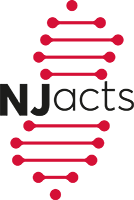This September, IMAP — a one-ton NASA spacecraft carrying 10 unique instruments — will launch into space to collect and interpret particles from the Sun and from exploded stars billions of miles beyond the farthest planets in our solar system. On board the Princeton-led mission will be a sophisticated space physics instrument, called SWAPI, which was meticulously built, tested and calibrated in a cleanroom on Princeton’s campus, housed in the basement of a former preschool.
Every year, students in Princeton’s Space Physics Laboratory course (AST 250/251) also “get their hands clean” in the confines of that cleanroom, designing and building sophisticated space physics instruments of their own — suiting up day after day in “bunny suits,” booties, hairnets, gloves and masks alongside the engineers and scientists building the NASA flight hardware.
“You are literally spending a year in a lab that’s also building a NASA satellite!” said William Li of the Class of 2027, who took the course his sophomore year. “My experience in this class directly contributed to me landing an internship at an aerospace company.” Lead instructor David McComas is NASA’s principal investigator for all of IMAP, the Interstellar Mapping and Acceleration Probe, a collaboration between 82 U.S. partner institutions in 35 states.
Co-instructor Jamie Rankin, a Princeton research scholar in astrophysical sciences, is a co-investigator on IMAP and the instrument lead for SWAPI, named for the Solar Wind and Pickup Ions it detects. To read the full story.
